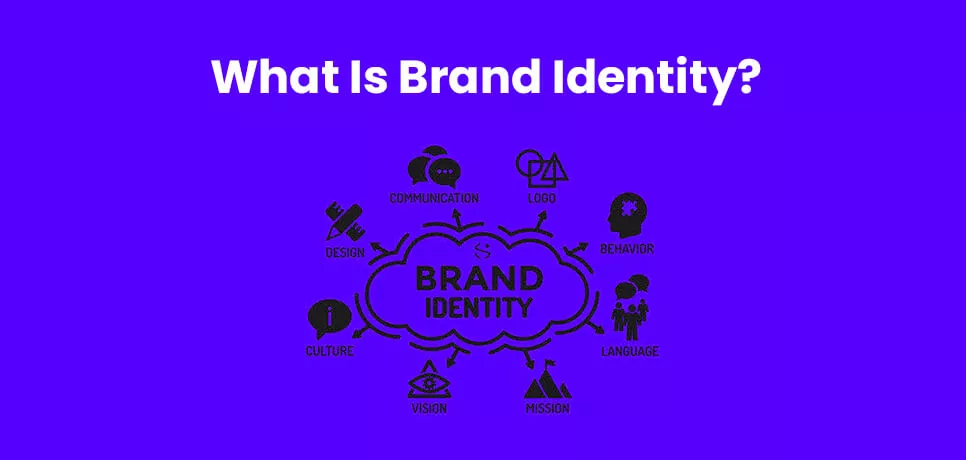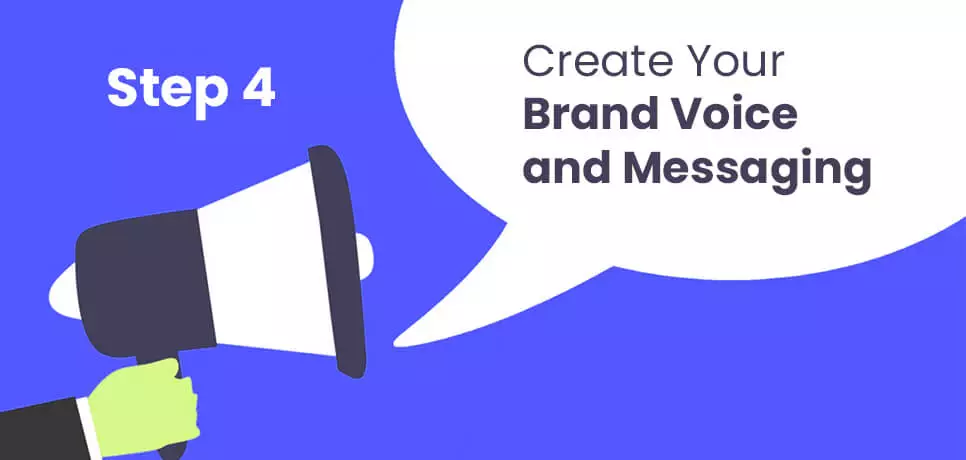How To Create A Strong Brand Identity In 2026

Brand identity is a concept that has been around for a long time, but misinterpretation is still common. Some have managed to get right. For example; leading Influencer marketing agency - Grynow is easily recognized as a provider of practical and affordable services that are unmatched by its competitors.
There were instances when the term was spoken in the same breath as a logo. No doubt a logo or registered trademarks stand with your company, but it is just one part of your overall branding. Besides the illustration, you need to focus on visual elements like your tagline, typography, color palettes, images, and non-visual elements like a brand personality, association, and voice. This article is a guide that will tell you everything you need to know about creating your brand identity. We will also be talking about the importance of branding, and we will also provide examples of companies that have successfully managed to pull it off.
What Is Brand Identity?

To make you understand the concept more clearly, let us associate a brand with an individual. When you meet new people, you immediately draw an impression out of of them. The feeling gets stronger when you continue interacting with them on multiple occasions. A strong brand identity works the same. It conveys what your brand is, what your values are, determines the positioning of your product/services, and influences how your audience feels every time they contact your brand. In other words, it portrays the "personality" of your business.
Importance of Brand Identity
Helps In Developing a Personality
Brand identity illustrates the values and personality of a company. Businesses messaging, mission, vision, and goals are communicated, thus giving rise to unique emotions in the minds of the consumers.
Creating Consistency
Developing a unique identity enables companies to maintain consistency throughout their marketing efforts. Each brand wants its audience to view them in a specific way - using the same style and visual elements helps them achieve this objective.
Differentiate Your Brand From Your Competitors
Everything you do, from designing your logo, using text, colors, voice, tagline, etc., will help you position your brand uniquely and help the audience differentiate you from your competitors.
Generating Awareness
Developing a brand identity means that your company will be effectively represented during every promotional campaign, thus leading to more awareness. When your potential customers recognize your brand in multiple instances, the image will stick in their minds.
Develop Loyalty
As more people start associating with your company and experience your product/services - they begin to trust you, which leads to them converting into loyal customers.
Steps To Create a Brand Identity
Step 1: What Is the Purpose Of Your Brand?

Knowing why you exist will help you define your mission, values, messaging, and goals. If you are not aware of it yourself, you can't expect your consumers to know the qualities that set you apart from the rest. Now, if you don't know what makes you unique and where to begin, you can always start by asking yourself the following questions.
- What differentiates you from your competitors?
- Why did you decide to start a business?
- Why should your audience consider you over others?
You can use the answers you get to formulate your brand message, voice, tagline, etc. As an example, let's look at how Dollar shave club succeeded in developing a brand identity. Men have been using Razors since time immemorial. The company entered the industry and changed the way it provided the service. They delivered their products right in front of the customer's doorstep - creating a quality experience out of an ordinary product. As a word of advice, jot down the points that make your business unique instead of making a mental note.
Step 2: Analyze Your Competitors and Audience

Competitors Research
I think you already know what we will talk about in this section. That's right, the next step for creating your brand identity involves uncovering everything there is to know about your competitors - this includes knowing what makes them unique? And why do your target customers consider buying from them? Navigating their official website is a good start, but that's not the end. You can attend your rival's live events or webinars, skim through the social media profiles, understand their email marketing campaigns, etc.
Here is a list of points you can analyze about your competitors.
- Study their unique selling proposition, logo, slogan, mission statement, and tagline.
- Your customer service review of their services.
- Check the visual elements they utilize and if the branding is consistent.
- Evaluate their modes of promotion.
- Look at how they communicate with their audience (tone/voice).
The entire purpose of studying your competitors is not to do what they do but find out what you can do differently to position yourself apart.
Audience Research
You need to understand everything there is about your audience. Why? - because you need to build a strong brand identity that sticks with them for a long time.
To gain valuable insights into your audience, you can ask them the following questions.
- How much are they willing to spend on a product?
- When do they buy it, and for what purpose?
- Where do they spend the majority of their time? (Social media platforms)
- What are their pain points, interest, and objectives?
- Who is their preferred vendor, and why did they choose them?
You'll be surprised as to how much you can learn by simply communicating with your audience. You can interact with users on social media sites, host events, webinars, polls, conduct surveys, etc. Compile all your findings in a place, and use them as a reference as you start building a lasting brand identity.
Step 3: Examine Your Brand Identity Design

Now that you know your brand's purpose and understand your customers and competition - perform an audit on your existing brand image. If this is your first time creating a brand identity - you are more than welcome to skip this step. However, this step is mandatory for those who are trying to repurpose their business image.
Start asking yourself the following questions:
- Are you maintaining brand consistency offline as well as online?
- Is a brand voice, message consistent?
- How does your audience perceive your brand?
It will be in your best interest to undertake a SWOT analysis. You can capitalize on the market opportunities, make better use of your strength, minimize your weaknesses and stay vigilant of threats.
Step 4: Create Your Brand Voice and Messaging

After you analyze your competitors and consumers, we are at the step where you start creating. First up, we have the brand voice. Do you I want people to perceive you as humorous or professional? a friend or expert? Or do you want to mix things up with a little bit of everything? The voice you select is vital for creating your brand identity and should be used consistently to communicate with your customer. That means the tone you use in your emails, copies, captions, and Website content should resonate with each other, leaving a lasting impression on your audience.
Step 5: Develop Your Visual Identity
A brand is recognized offline and online by its visual elements. Your logo, tagline, typography, color palette, etc., represent your company. So, let's look at them one at a time.
Logo
The logo is arguably the most recognizable digital asset of a brand. Take any brand that comes to your mind; you will undoubtedly see their logo representing them on newsletters, social media platforms, billboards, online ads, etc. I think it is safe to say that logo is one of the vital brand identity elements. Your logo has to be attractive, no question about that. But apart from this, it should also effectively convey your brand's messaging. Take Nike's logo, for example; the famous 'Swoosh' is derived from the Greek goddess of victory - symbolizing speed, power, and motivation. Remember, you should not constantly update your logo. We advise you to go with the classic look instead of the trendier alternative.
Color Palettes
Defining a specific set of colors is essential to maintain consistency in your brand identity. Please be extra careful when creating your palette because the shades you select will be used for your website design, packaging, social media posts, video thumbnails, etc. We recommend familiarizing yourself with color psychology before designing your color scheme. We, as humans, are programmed to perceive each color differently. Snapchat uses yellow for branding, as the color is associated with energy and playfulness.
Typography
Typography will include the fonts you will use to describe your business and is a critical factor for designing brand identity.Like colors, the text holds the power to influence your customer's mood and create a lasting impact. For example; Horror movies use eerie-looking fonts to induce fear in their audience. You can select up to three readable fonts families, but be consistent in their usage. That means you should use the same texts in your logo, print, and digital resources.
Step 6: Maintain Consistency With Your Brand Identity

When you reach this step, most of the hard work is already over. Now, your job is to make the identity you have created known to the public. How can you do this? - for starters, use your newly selected fonts and colors to create your digital content, insert your logos on your website, advertisements, infographics, or posts. Communicate with your audience in your brand voice while not deviating from your brand message and core values. When working in a large team, it would help if you had a guide. A guide is a document that defines guidelines on the usage of design assets. With this, you can ensure that the work your staff performs resonates with your brand identity.
Step 7: Keep Track of Your Performance Metrics

Now, all that is left is for you to maintain the strong brand identity you have created. How can I do it? - you can start by tracking key performance metrics like customer reviews, brand mentions, comments, social media discussions, etc. You can also undertaker survey's or use data acquired from Google Analytics to picture how your customers view and interact with your organization. Also, it would help you know that you will probably have most of the steps we have covered s only once. However, monitoring your performance metrics is something you have to do continuously to ascertain that your efforts were received positively by your customers.
Companies With Strong Brand Identity
Starbucks
Starbucks' rise to success is all thanks to the customer experience they have built for coffee lovers. The company outlets provide custom-made coffee, have a relaxing atmosphere, timely service, welcoming staff, and elegant design. The companies went that extra mile to create round-tables so that their visitors are never left alone - this shows how much they care about their customers.
Starbucks is a term not alien to youngsters and young adults. The increased use of social media has only extended the brand's reach to new markets. By maintaining consistency in their service, they have created a sense of connectivity throughout the globe. A United States resident can now enjoy the same coffee and ambiance when he visits a Starbucks in Europe or Asia. Starbucks was also first amongst its competitors to implement a resourceful CRM system. They have successfully improved the brand's image by utilizing the rewards.
Apple
Apple has gone to great lengths to create a brand identity for itself. Even if you don't own a product, I am sure you heard of the brand or have associated with them somehow. Apple has positioned itself to be a brand that creates a high-quality product, has different designs, unique outlets, and well-trained employees. We can do nothing but applaud Apple's customer service approach. Even though they have opted to follow a standard strategy - outlets across the globe are tailored to the residents' taste.
The outward look of Apple stores may be the same, but the pages on their official sites are translated and localized for their international consumers. Thank you for staying with us till the end. Building brand identity takes time, but we are confident that our article will guide you in the right direction.
Feel free to share.